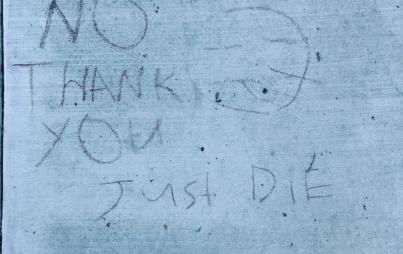
Credit: ThinkStock
Have you ever wished you could channel your drunk friend's droning voice into . . . something useable? Have you ever thought, damn, if the city ever needs a back-up generator this loquacious bitch screaming about her sex life has their back?
Sadly, as ear-splitting and seemingly endless as her words may seem—her vocal chords must have blisters—the human voice just doesn't produce enough energy to harness.
If you yelled for 8 years, 7 months and 6 days, you would have produced enough sound energy to heat one cup of coffee.
While we might experience some sound at what seem to be face-melting levels (like that epic Dream Theater show) or head-clutchingly loud (like the maddening squeal of subway brakes) . . . in actuality, those kinds of noises only produce about a hundredth of a watt per square meter. (Versus our big ol' beautiful sun for example, which creates about 680 watts per meter squared.)
There’s a strong interplay between vibrations through the medium that you hear through—air or water—and the physical objects around you. It’s perfectly conceivable to absorb that movement and glean useable energy. You’re not going to power a city with it, but you can power small devices.” — David Cohen-Tanugi, water researcher at MIT
Cohen-Tanugi also explains that there are a handful of companies—like The Facility—a London-based architecture/design firm, who are dedicating research to acoustic sound; they believe that the mechanical vibrations we create every day, from the rattling of city infrastructure to footsteps echoing throughout a stadium could harnessed. In fact, in 2012, researchers from New York's Stony Brook University patented some revolutionary technology capable of harnassing the vibrations of a locomotive, which in turn, can power the train's track switches and signal lights.
"Such a design not only avoids the challenges of friction and impact induced by oscillation motion, but also enables us to make full use of the pulse-like features of track vibration to harvest more energy," explained Professor Zuo, who worked alongside the graduate students at Stony Brook.
Zuo believes that by implementing their Mechanical Motion Rectifier based Railroad Energy Harvester (doesn't that just roll off the tongue) the U.S. could be poised to save nearly $10 million in power supply costs for New York State alone. And that's to say nothing of reducing 3,000 tons of carbon dioxide from the atmosphere every year.
Not too shabby.
So while we can't scream our way out our energy crisis, these tiny vibrations could very well charge up our smart phones in the future . . . or a triple AAA—just-for-my-rabbit—battery.
A girl can dream.






